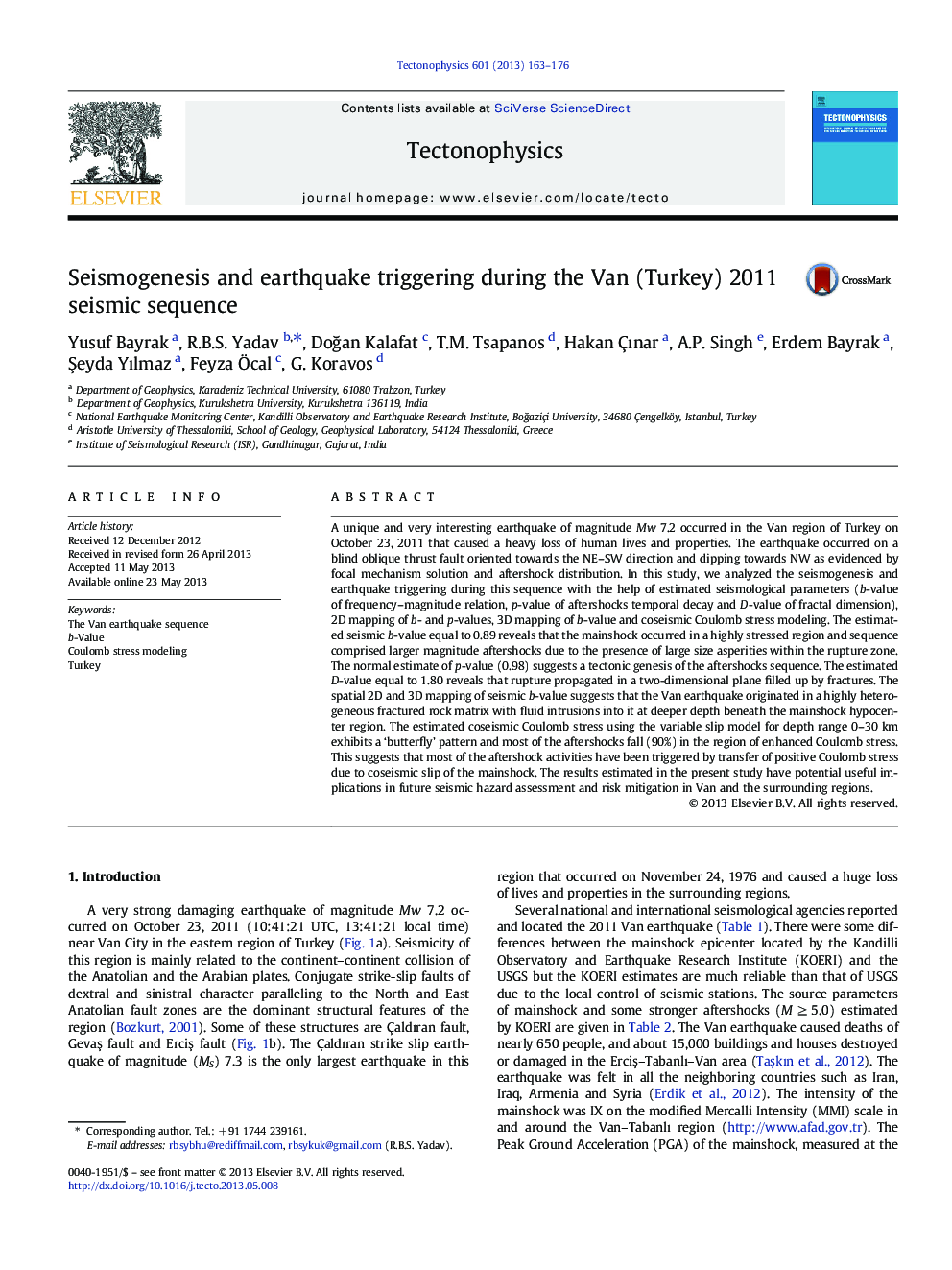| کد مقاله | کد نشریه | سال انتشار | مقاله انگلیسی | نسخه تمام متن |
|---|---|---|---|---|
| 4692278 | 1636786 | 2013 | 14 صفحه PDF | دانلود رایگان |
• We investigated 2D and 3D variations of b-value for the 2011 Van, Turkey earthquake.
• We also investigated earthquake triggering using coseismic Coulomb stress modeling.
• Highly heterogeneous fractured rock matrix with fluid intrusions within hypocenter
• Most aftershocks (about 90%) were triggered as evidenced by Coulomb stress modeling.
A unique and very interesting earthquake of magnitude Mw 7.2 occurred in the Van region of Turkey on October 23, 2011 that caused a heavy loss of human lives and properties. The earthquake occurred on a blind oblique thrust fault oriented towards the NE–SW direction and dipping towards NW as evidenced by focal mechanism solution and aftershock distribution. In this study, we analyzed the seismogenesis and earthquake triggering during this sequence with the help of estimated seismological parameters (b-value of frequency–magnitude relation, p-value of aftershocks temporal decay and D-value of fractal dimension), 2D mapping of b- and p-values, 3D mapping of b-value and coseismic Coulomb stress modeling. The estimated seismic b-value equal to 0.89 reveals that the mainshock occurred in a highly stressed region and sequence comprised larger magnitude aftershocks due to the presence of large size asperities within the rupture zone. The normal estimate of p-value (0.98) suggests a tectonic genesis of the aftershocks sequence. The estimated D-value equal to 1.80 reveals that rupture propagated in a two-dimensional plane filled up by fractures. The spatial 2D and 3D mapping of seismic b-value suggests that the Van earthquake originated in a highly heterogeneous fractured rock matrix with fluid intrusions into it at deeper depth beneath the mainshock hypocenter region. The estimated coseismic Coulomb stress using the variable slip model for depth range 0–30 km exhibits a ‘butterfly’ pattern and most of the aftershocks fall (90%) in the region of enhanced Coulomb stress. This suggests that most of the aftershock activities have been triggered by transfer of positive Coulomb stress due to coseismic slip of the mainshock. The results estimated in the present study have potential useful implications in future seismic hazard assessment and risk mitigation in Van and the surrounding regions.
Journal: Tectonophysics - Volume 601, 2 August 2013, Pages 163–176
